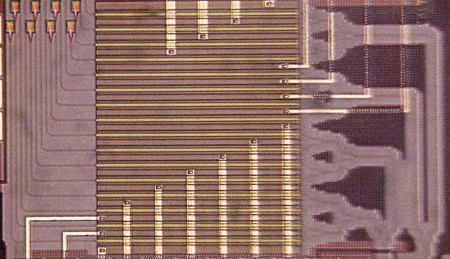New Solid-State Projector Device
on

Researchers at Caltech have developed a novel device which uses an integrated optical phased array (OPA) structure to project images electronically, using a single laser diode as the light source with no mechanical moving parts or lenses. From the description it seems to operate in much the same way that phased-array radars steer a radar beam by adjusting the signal phase to each antenna element in the array.
The Caltech device works at optical wavelengths, the lead researcher Ali Hajimiri and his colleagues found out they did not need traditional optics to bend light but could achieve the same result by altering the coherence of light. When two light waves are in phase in the direction of propagation they combine to give twice the amplitude and four times the energy. By changing the relative wave timing they were able to change the direction of the beam.
"Because the direction of the light beam is controlled electronically and not mechanically, it can create a sort of line very quickly," said Hajimiri. "Since the light draws many times per second, the eye sees the process as a single image instead of a moving light beam." Researchers said that “In the future, this can be incorporated into a cell phone. Since there is no need for a lens, you can have a phone that acts as a projector all by itself.”


Discussion (0 comments)